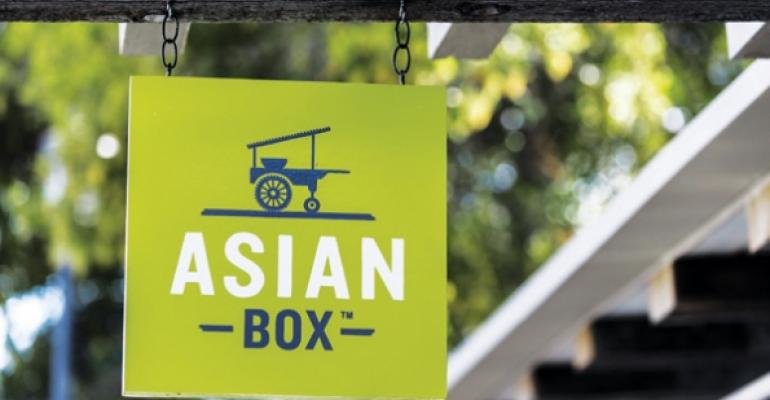![]() There’s a lot of talk these days about striking a resonant chord with customers, about getting them emotionally invested in a brand.
There’s a lot of talk these days about striking a resonant chord with customers, about getting them emotionally invested in a brand.
The Vietnamese-focused Asian Box concept has done that by selling a lifestyle.
Frank Klein, the fast-casual chain’s founder, said the particular lifestyle Klein is targeting with Asian Box is a popular one in the San Francisco Bay Area: no fried foods, fewer carbohydrates and grilled meats. Composting, recycling and sourcing organic and/or local products also factors into that lifestyle.
Consumers are responding, he added. He said he sees diners frequenting the restaurant several times a week, ordering Six Spice Blend Chicken over vegetable salad on one visit, Garlic and Soy Glazed Beef with white rice on the next and Coconut Curry Tofu on brown rice on a third.
![]() “It has all those good traits that a lot of us look for in restaurants,” said Lynne Bennett, a food and wine staff writer at the San Francisco Chronicle. “They also give people choice, which is good. I think people have an affiliation with what they can see and pick for themselves.”
“It has all those good traits that a lot of us look for in restaurants,” said Lynne Bennett, a food and wine staff writer at the San Francisco Chronicle. “They also give people choice, which is good. I think people have an affiliation with what they can see and pick for themselves.”
The menu is fairly straightforward, and ordering from it is simple for people accustomed to fast-casual dining or “column A/column B” Chinese restaurants:
• Pick a base — white rice, brown rice, cold rice noodles or Asian vegetable salad;
• Pick a protein — chicken, pork, beef, tofu or shrimp;
• Pick a vegetable — steamed or wok-tossed;
• Pick toppings and sauces, including bean sprouts, chopped peanuts, pickled vegetables, herbs, a secret spice blend called Asian Street Dust, house-made Sriracha, peanut sauce, tamarind vinaigrette and fish sauce. “Caramel egg,” a Vietnamese specialty of a hard-boiled egg coated in fish sauce and caramel, also is available.
![]() Klein said that despite the name the restaurant is not pan-Asian.
Klein said that despite the name the restaurant is not pan-Asian.
“We’re Vietnamese,” he said. “Vietnamese chef-, Vietnamese ingredient-driven.
“Our beef with rice is a classic dish that people who have been to Vietnam say is as close as you can get to Vietnamese street food,” he added.
Even the chicken used is dark meat rather than breast.
Bennett pointed to one other distinguishing characteristic: Asian Box is entirely gluten free.
Although that wasn’t part of Klein’s original plan, he said when they opened and conducted a nutritional analysis of their food, they realized that without trying very hard they could be gluten free.
“We never wanted to do bánh mì,” he said, referring to the popular Vietnamese sandwich. So the only challenge was finding soy sauce without gluten.
Although most soy sauces contain wheat, Klein found several high-end brands made entirely of soybeans.
One telling factor that Asian Box’s regulars are at ease with the concept is they’ve started to do their own customizing, Klein said, noting, “People feel very comfortable saying, ‘You know, I want half brown, half white rice.”
Contact Bret Thorn at [email protected].
Follow him on Twitter: @FoodWriterDiary





